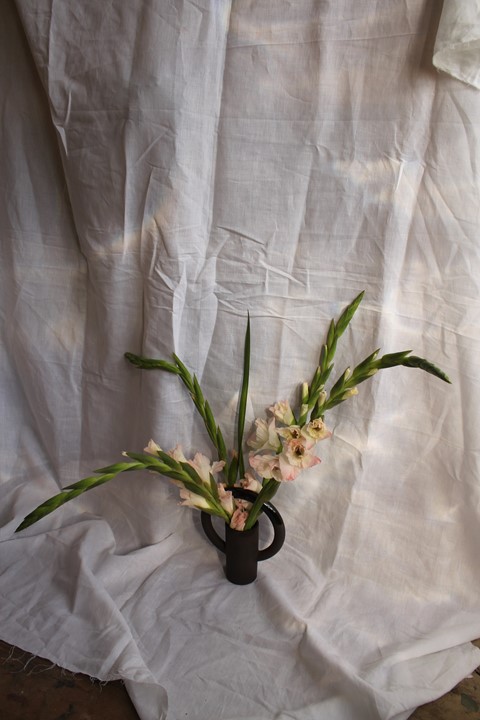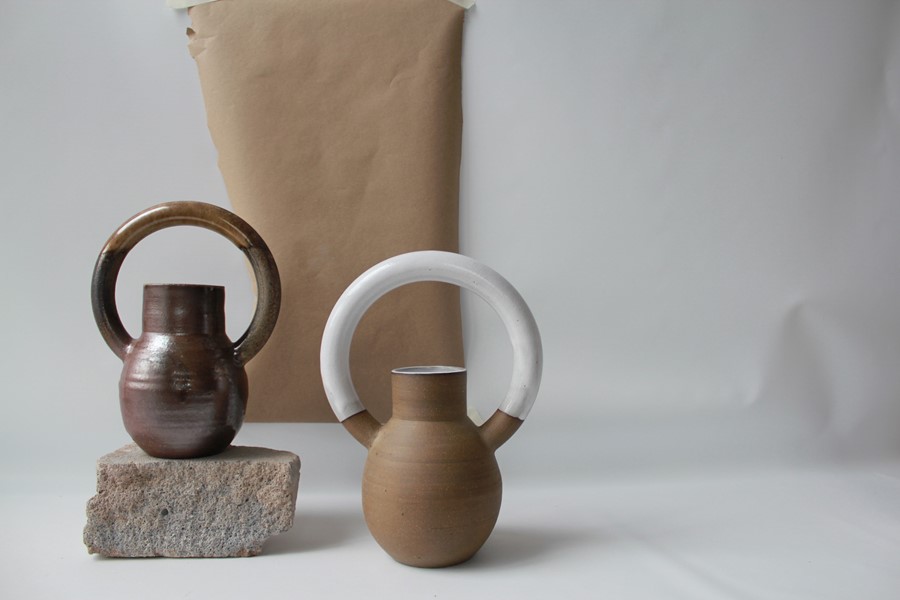The London-based artist on the importance of perseverance and making mistakes when it comes to her ceramic sculptures and homewares
“There’s a subtle balance with Lily’s work, her forms have very human proportions. They occupy a space that is simultaneously simple and technically hard to achieve.” So says Anna Howard, who’s currently showing and selling ceramicist Lily Pearmain’s work at Hackney’s 77 Broadway Market, the cultural artefact sister space to the storied Donlon Books. After her first show there in the summer, Lily is back presenting new terracotta pieces that are part sculpture, part purpose (many of them make for beautiful vases), but all satisfying spheres and playful doughnut rings.
Remarkably, the 26-year-old only started pottery three years ago and – like everyone else who tries it – admits, “I was crap”. But she loved it, persevered, joined Turning Earth’s professional incubator and slowly started to find her voice, eventually moving from tableware through to sculpture by way of a happy accident. “I was exploring different shapes and I remember making a doughnut on its own and a cylindrical vase at the same time. I had them in my hands and I remember holding the doughnut behind the cylinder and looking at it and doing that cringey artisty thing, working out the dimension of it and being like, ‘How would this work? How could I assemble it?’ And then I thought, ‘Fuck it’, put it together and it worked.”
The results feel fresh and contemporary, finding a forebear in shapes created by ancient Peruvians and Picasso himself. Here Lily breaks down her world of throw down.

On fucking up…
“This new batch of work has been made here in my new Peckham studio, which has enabled me to experiment more. There’s a self-consciousness that comes from being in a shared studio. It’s nice to be able to experiment and not feel like someone’s looking over your shoulder. Fucking up has been really useful. I never felt confident enough to do glaze testing or working with a clay body that required different ranges of firing until now. It’s been great for my creative process. It’s good just to have the space to think. A lot of the time I just stare at something and think, ‘Where is this collection of work going? What am I doing?’ Or just sit and really consider a bowl for half an hour!”
On the ancient art…
“This clay that I’m working with now is this terracotta which is very dark, burnt red. This material and this form are ancient. People have been making these forever. They’ve found things like this in South American digs. There’s nothing new in ceramics. Because it’s such an ancient material, everything’s been made before. There are things that are naturally appealing in terms of shape and proportion. We just return to the same things, but these also come from me, because I hadn’t ever seen these Peruvian pots. In South American pottery, they had huge rings that were flasks and they’d carry them over their shoulder and there’d be a nozzle and they’d pour it out over their shoulder. Incredible.”

On her potter inspirations…
“Picasso’s work always blows me away. I’m not a huge fan of his paintings, but I love his ceramic work. On more of a potter level, Bernard Leach, who had a pottery in St Ives, and Lucie Rie who’s Hungarian and came to the UK just after the war. Her work is lovely. The British Museum is a good place to see work and the V&A is excellent – they have a whole department of ceramics that’s essentially hidden. It was created by Edmund de Waal, who’s a contemporary potter and writer. The only way up there is one lift and it’s not even properly labelled. A lot of Edmund de Waal’s work is about hidden spaces, so you can only see his work if you know where to look. There’s this dome at the top of the department and if you look up, all of his work is hidden around the inside rim of the dome. There’s a really great residency there as well. They have a fish tank of a studio, so you can go and watch their resident making whatever.”
On the strange appeal of the doughnut…
“They’re perfectly spherical, but I also really enjoy people being confused by them. The sculptures are like really cumbersome handbags. It offers people an opportunity to think about how things are made, and the more you can engage someone with, ‘How’s she done that? How’s it working? How did she fire that?’ the more the viewer can appreciate how much hard work goes into making them.”
Lily Pearmain’s work is available at 77 Broadway Market.
